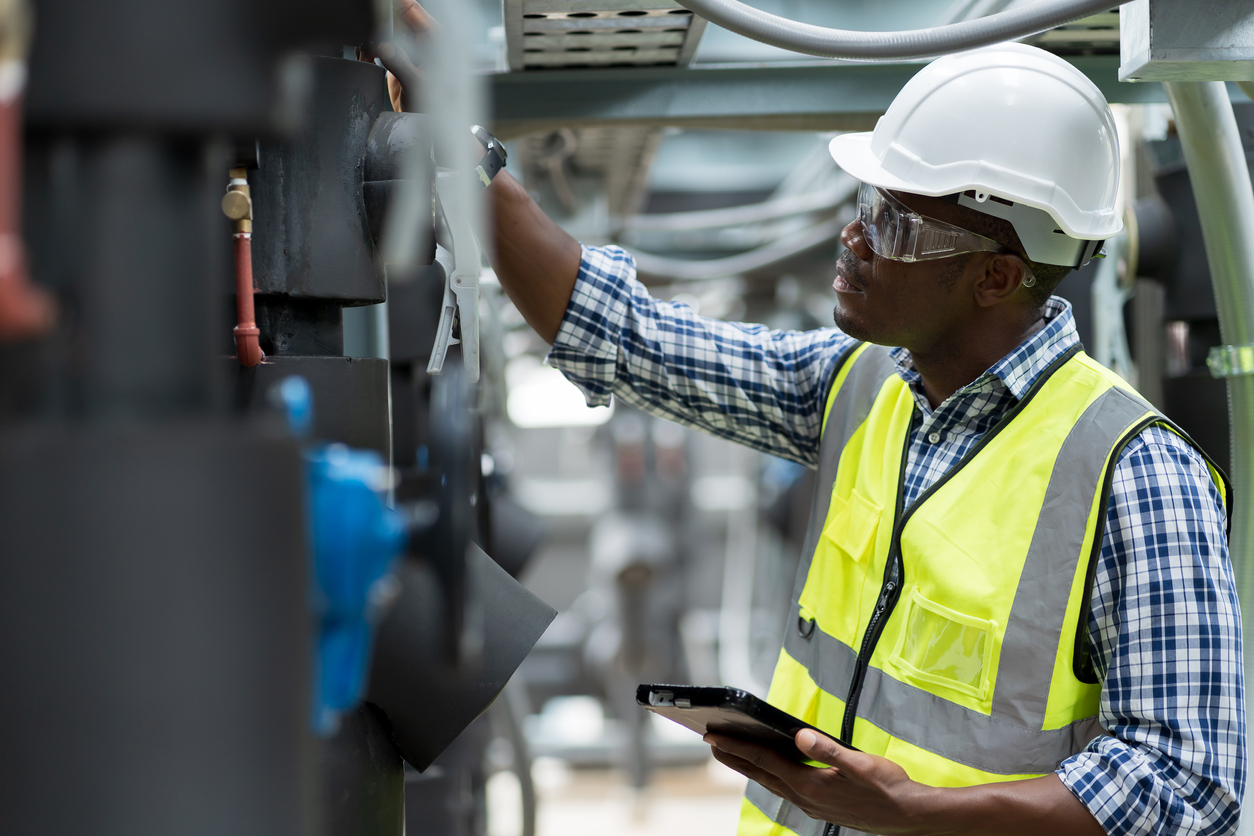Detecting Flaws Early: The Importance of Crack & Stress Inspection for HDPE Pipes in Nigeria
Detecting Flaws Early: The Importance of Crack & Stress Inspection for HDPE Pipes in Nigeria
Nigeria’s infrastructure is constantly evolving, but one crucial element that often goes unnoticed is the maintenance of HDPE pipes. These pipes play a vital role in delivering essential resources such as water and gas to communities across the country. However, without proper crack and stress inspection, these pipelines can be prone to failure, leading to costly repairs and potential safety hazards. In this blog post, we will delve into the importance of early detection for flaws in HDPE pipes and how it can ultimately save time, money, and lives in Nigeria.
Introduction to HDPE Pipes and their Importance in Nigeria
Introduction to HDPE Pipes and their Importance in Nigeria
High-density polyethylene (HDPE) pipes have become an integral part of the infrastructure development in Nigeria. They are widely used for various applications such as water supply, gas distribution, sewage disposal, and industrial processes. HDPE pipes are known for their durability, flexibility, and resistance to corrosion and chemicals, making them a preferred choice over traditional piping materials like steel or concrete.
In recent years, there has been a significant increase in the use of HDPE pipes in Nigeria due to its many advantages. These include its lightweight nature which makes it easier and more cost-effective to transport and install compared to other materials. Additionally, HDPE pipes have a longer lifespan than other materials, reducing the need for frequent replacements and maintenance.
The importance of HDPE pipes goes beyond their physical properties; they also play a crucial role in promoting sustainable development in Nigeria. The country is facing challenges with regards to water scarcity and inadequate sanitation facilities. This is where HDPE pipes come into play by providing reliable solutions for water supply systems and sewage disposal networks.
Moreover, the use of HDPE pipes has had a positive impact on the economy of Nigeria. With its growing demand for infrastructure development projects across various sectors such as agriculture, oil & gas, manufacturing industries among others – the production of HDPE pipes has created employment opportunities and boosted local economies.
However, like any other material used in construction projects, HDPE pipes are prone to damages if not properly installed or maintained. One common issue faced by these pipelines is cracks caused by stress or external factors such as soil movement or heavy traffic loads passing over them.
This brings us back to our main topic – detecting flaws early through crack & stress inspection for HDPE pipes in Nigeria. It is vital that regular inspections are conducted to identify any potential issues before they escalate into major problems that can result in costly repairs or replacement.
Early detection of cracks and stress in HDPE pipes is crucial as it allows for timely interventions to be made, preventing further damage and ensuring the safety of the surrounding environment. This is especially important in areas with high population density or where the pipelines are located near critical infrastructure.
The use of HDPE pipes has greatly contributed to Nigeria’s development and growth. Their importance cannot be overstated, but it is equally essential to prioritize regular inspections for crack & stress detection to ensure their optimal functioning and longevity.
Understanding the Need for Crack & Stress Inspection
Understanding the Need for Crack & Stress Inspection
HDPE pipes are widely used in various industries and applications due to their durability, flexibility, and resistance to corrosion. In Nigeria, these pipes are commonly used in water supply systems, gas pipelines, and sewage networks. However, like any other material, HDPE pipes are also prone to flaws and defects that can compromise their integrity and performance over time.
Cracks and stresses are two common types of flaws that can occur in HDPE pipes. Cracks are visible breaks or fissures on the surface of the pipe caused by external forces or internal stresses. On the other hand, stresses refer to excessive pressure or tension within the pipe that can lead to deformation or failure.
The need for crack and stress inspection arises from the fact that these flaws can significantly impact the safety and reliability of HDPE pipes. If left undetected or untreated, cracks and stresses can cause leaks, bursts, or even catastrophic failures that can result in costly repairs, downtime, and potential hazards.
One of the main reasons why crack and stress inspection is crucial for HDPE pipes is because they are often installed underground or buried under layers of soil. This makes it challenging to visually detect any signs of damage on their surface. As a result, routine inspections using specialized techniques become necessary to identify potential issues before they escalate into major problems.
Moreover, HDPE pipes are constantly subjected to harsh environmental conditions such as temperature changes, chemical exposure, heavy loads from traffic or soil movement. These factors can contribute to the development of cracks and stresses over time. Therefore, regular inspections allow for early detection of these flaws so appropriate measures can be taken to prevent them from worsening.
In addition to preventing failures and downtime costs associated with pipe replacements or repairs; detecting cracks early through inspections also helps maintain high-quality water supply systems in Nigeria. Undetected cracks could allow contaminants into the drinking water supply leading to serious public health implications.
Understanding the need for crack and stress inspection is essential for ensuring the longevity and safety of HDPE pipes in Nigeria. Regular inspections using advanced techniques can help identify flaws early on, allowing for timely repairs or replacements to be made, thus minimizing potential risks and costs in the long run.
The Dangers of Undetected Flaws in HDPE Pipes
HDPE (High-Density Polyethylene) pipes are widely used in Nigeria for various applications such as water supply, sewage systems, and gas distribution. These pipes are known for their durability and strength, making them a popular choice among industries. However, despite their many benefits, HDPE pipes can also pose serious risks if undetected flaws go unnoticed.
One of the main dangers of undetected flaws in HDPE pipes is the potential for leaks. Cracks or stress on the surface of the pipe can lead to small holes that allow water or other substances to leak out. This not only causes wastage but can also contaminate the surrounding environment and cause damage to infrastructure. In addition, these leaks can result in water shortages or disruptions in services such as gas distribution.
Another danger of undetected flaws in HDPE pipes is the risk of pipe failure. Cracks or stress points weaken the structural integrity of the pipe and increase the likelihood of it breaking under pressure. This can have serious consequences, especially if it occurs in critical areas such as underground pipelines carrying hazardous materials.
Furthermore, undetected flaws in HDPE pipes also pose a threat to human safety. In case of a sudden pipe failure due to an undetected flaw, there is a risk of injury or even loss of life for those working nearby or using water from affected pipelines. Moreover, if toxic substances leak from damaged pipes into nearby soil or groundwater sources, it can have long-term health implications for local communities.
The financial impact of undetected flaws in HDPE pipes should not be underestimated either. The cost associated with repairing or replacing damaged pipelines due to undetected flaws can be significant for both industries and consumers alike. It also leads to increased maintenance costs and can disrupt regular operations resulting in losses for businesses.
To avoid these potential dangers and their consequences, early detection through regular crack & stress inspection is crucial for HDPE pipes. This involves using specialized equipment such as ultrasonic testing and visual inspection to identify any flaws or defects in the pipes. By detecting and addressing these issues early, it is possible to prevent leaks, pipe failures, and other hazards.
The dangers of undetected flaws in HDPE pipes cannot be overstated. These issues not only have negative impacts on the environment but also pose a threat to human safety and can result in significant financial losses. Therefore, it is essential for industries and water authorities in Nigeria to prioritize regular crack & stress inspection of HDPE pipes to ensure their structural integrity and prevent potential risks.
Types of HDPE Pipe Inspection Methods
HDPE (High-Density Polyethylene) pipes are widely used in various industries and applications due to their durability, flexibility, and resistance to corrosion. However, like any other material, these pipes can also develop cracks or stress points over time due to factors such as pressure, temperature changes, and external forces. It is crucial to detect these flaws early on to prevent potential disasters and ensure the longevity of the pipeline system. In this section, we will discuss the different types of HDPE pipe inspection methods that are commonly used in Nigeria.
1. Visual Inspection:
Visual inspection is the most basic form of inspection for HDPE pipes. It involves visually examining the external surface of the pipe for any visible signs of damage or defects such as cracks, deformations, discoloration, or uneven surfaces. This method is usually done during installation or routine maintenance checks and can help identify any obvious issues that require further investigation.
2. Non-Destructive Testing (NDT):
Non-destructive testing (NDT) techniques are widely used in pipeline inspections to assess the internal condition without causing any damage to the pipe itself. There are various NDT methods available for HDPE pipe inspection such as ultrasonic testing (UT), radiography testing (RT), magnetic particle testing (MPT), and liquid penetrant testing (LPT). These methods use sound waves, X-rays, magnetic fields, or dyes to detect flaws within the pipe walls which may not be visible through visual inspection alone.
3. Hydrostatic Pressure Testing:
Hydrostatic pressure testing is a technique where water or another suitable fluid is pumped into the pipeline system at a specific pressure level for a certain duration while monitoring for any leaks or drops in pressure. This method helps identify weak spots within the pipe walls that could potentially lead to cracks under high-pressure conditions.
4. Ultrasonic Thickness Measurement:
Ultrasonic thickness measurement uses ultrasonic waves to determine the thickness of the pipe walls. This method can help detect any localized thinning or uneven thickness along the length of the pipe, which could be an indication of stress points or potential cracks.
5. Infrared Thermography:
Infrared thermography is a non-contact method that uses thermal imaging cameras to detect temperature variations on the surface of the pipes. This technique is particularly useful in identifying hot spots caused by friction or blockages within the pipeline system, which could lead to stress and eventually cracks.
Regular inspections using a combination of these methods are essential for early detection and prevention of flaws in HDPE pipes. It is recommended to consult with a professional inspection company with expertise in HDPE pipelines to determine which inspection methods are most suitable for your specific needs and ensure the safety and reliability of your pipeline system.
Benefits of Ultrasonic Pipe Inspection for HDPE Pipes
Ultrasonic pipe inspection technology has revolutionized the way cracks and stress in HDPE pipes are detected. This non-destructive testing technique uses high-frequency sound waves to identify flaws within the material of the pipe, providing accurate results without causing any damage. In this section, we will discuss the benefits of using ultrasonic pipe inspection for HDPE pipes in Nigeria.
1. Early Detection of Flaws:
One of the major advantages of ultrasonic pipe inspection is its ability to detect flaws at an early stage. As sound waves travel through the material, they can spot even minor cracks and stress points that may not be visible to the naked eye. This allows for proactive measures to be taken before these flaws turn into major issues, saving time and money on expensive repairs or replacements.
2. Non-Destructive Testing:
Unlike other methods such as X-ray or ultrasound scanning, ultrasonic pipe inspection is a non-destructive testing technique. It does not require cutting or drilling into the material, which means there is no risk of damaging the integrity of the pipe during the inspection process. This makes it a safe and cost-effective solution for detecting flaws in HDPE pipes.
3. Accurate Results:
The use of high-frequency sound waves in ultrasonic testing provides accurate results with minimal errors. This enables engineers and technicians to pinpoint specific locations where cracks or stress points are present, allowing them to take targeted actions for repair or maintenance purposes.
4. Cost-Effective:
Ultrasonic pipe inspection is a cost-effective method for inspecting HDPE pipes as it eliminates unnecessary repairs and replacements caused by undetected flaws that could result in leakages or bursts later on. By identifying potential problem areas early on, it helps save on costly downtime and emergency repairs while ensuring smooth operations.
5.Saves Time:
Time is crucial when it comes to preventing pipeline failures that can lead to disruptions in services or production processes. Ultrasonic pipe inspection allows for a speedy and efficient way of detecting flaws, eliminating the need for lengthy and time-consuming manual inspections. This not only saves time but also ensures timely maintenance and repairs, reducing the risk of unexpected failures.
Ultrasonic pipe inspection offers numerous benefits for HDPE pipes in Nigeria. It allows for early detection of flaws, is a non-destructive testing method, provides accurate results, is cost-effective and helps save time. By incorporating this technology into regular pipeline maintenance programs, companies can ensure the longevity and reliability of their HDPE pipes while avoiding costly repairs or replacements in the future.
How Wigmore Trading Provides Comprehensive Solutions for HDPE Pipe Inspection and Repair in Nigeria
Wigmore Trading is a leading provider of comprehensive solutions for HDPE pipe inspection and repair in Nigeria. With years of experience and expertise in the industry, we understand the importance of early detection of flaws such as cracks and stress in HDPE pipes and are committed to providing effective solutions to our clients.
One of the key services that Wigmore Trading offers is HDPE pipe inspection. Our team of highly trained professionals uses advanced techniques and equipment to detect any potential issues with the pipes. This includes visual inspections, ultrasonic testing, magnetic particle testing, dye penetrant testing, and radiographic testing. By thoroughly inspecting each section of the pipeline, we can identify any cracks or stress points that may compromise its integrity.
In addition to inspection, Wigmore Trading also provides top-of-the-line repair services for HDPE pipes. We understand that timely repairs are crucial in preventing small issues from turning into larger, more costly problems. Our team has extensive experience in repairing all types of damage to HDPE pipes including cracks, leaks, corrosion, and stress fractures.
To ensure accuracy and efficiency in our repair services, we use innovative techniques such as electrofusion welding which allows for seamless joints without compromising the strength or durability of the pipe. We also offer butt fusion welding which is ideal for larger diameter pipes.
At Wigmore Trading, we prioritize quality assurance by adhering to international standards such as ISO 9001:2015 and ASME BPVC Section Vlll Div 1 & 2 for pressure vessels. Our team consistently undergoes training to keep up with industry advancements and best practices.
We understand that every client has unique needs when it comes to their pipelines. That’s why we offer customized solutions tailored to meet our clients’ specific requirements. Whether it’s a routine inspection or an emergency repair situation, our team is equipped to handle projects of all sizes with utmost professionalism.
Our commitment doesn’t end with just providing exceptional services. We also believe in building long-term relationships with our clients by offering ongoing support and maintenance services. This includes regular inspections to ensure the continued integrity of the pipes and timely repairs if needed.
Wigmore Trading is dedicated to providing comprehensive solutions for HDPE pipe inspection and repair in Nigeria. Our expertise, cutting-edge technology, and commitment to quality make us a trusted partner for all your pipeline needs. Contact us today to learn more about how we can assist you in detecting flaws early and ensuring the longevity of your HDPE pipes.
Case Studies: Successful Detection and Repair of Flaws in HDPE Pipes with Wigmore Trading’s Services
In the world of pipeline infrastructure, one of the most commonly used materials is High-Density Polyethylene (HDPE). This versatile material offers a range of benefits such as durability, flexibility, and resistance to corrosion and chemicals. However, like any other material, HDPE pipes are not immune to flaws and defects that can compromise their structural integrity.
At Wigmore Trading, we have encountered several cases where HDPE pipes in Nigeria were found to have cracks or stress points due to various factors such as improper installation, external damage, or manufacturing defects. These issues not only pose a risk for leaks and breaks but also result in costly repairs and downtime.
Fortunately, with our advanced inspection techniques and repair solutions at Wigmore Trading, we have successfully detected and repaired these flaws in numerous HDPE pipes across Nigeria. For instance:
– In one case study involving an industrial plant in Lagos State using HDPE pipes for water supply purposes, our team was called in to conduct an inspection after leakages were reported. Our initial visual inspection revealed no visible signs of damage on the surface; however, with our non-destructive testing methods such as ultrasonic testing (UT) and magnetic particle inspection (MPI), we were able to detect small cracks near the joints of the pipes. Using our high-quality welding equipment and expert techniques, we were able to repair these cracks effectively without having to replace the entire pipe system.
– Another successful case involved a construction site in Abuja where newly installed HDPE pipes showed signs of stress points during hydrostatic pressure testing before commissioning. With our specialized stress analysis techniques using strain gauges and finite element analysis (FEA), we identified areas with high levels of stress concentration caused by improper alignment during installation. We then provided recommendations for remedial measures such as reinforcing weak spots with additional support structures.
– Additionally, at a gas distribution plant in Port Harcourt where HDPE pipes had been installed underground for over 10 years, our team conducted a comprehensive inspection using ground-penetrating radar (GPR) technology to detect any hidden flaws. We found that the pipes had been damaged by corrosion and external stress from heavy machinery passing over them. We were able to quickly repair these damages and prevent any potential hazards.
These are just a few examples of how our services at Wigmore Trading have successfully detected and repaired flaws in HDPE pipes, saving our clients time, money, and ensuring their pipeline systems remain functional and safe. Our experienced technicians and state-of-the-art equipment make us one of the leading providers of crack and stress inspections for HDPE pipes in Nigeria. Don’t wait until it’s too late – contact us today for all your pipeline inspection needs!
–
Cracks and stress are common occurrences in HDPE pipes, especially in harsh environments like Nigeria where they are often exposed to extreme temperatures and pressure. These flaws can significantly affect the performance and lifespan of the pipes, leading to costly repairs or even complete system failure. That’s why it is crucial for HDPE pipe manufacturers, installers, and users in Nigeria to prioritize regular crack and stress inspections.
One of the primary reasons why early detection of cracks and stress is critical for HDPE pipes is that these flaws tend to worsen over time. A small crack or weak spot may seem harmless at first, but as it continues to be exposed to constant pressure, it can grow bigger and possibly result in a catastrophic failure. This not only disrupts the flow of water or other materials through the pipe but also poses a safety hazard to people living nearby.
Moreover, detecting cracks and stress early allows for timely repairs or replacements before they become more extensive and costlier issues. Early intervention can save valuable resources such as time, money, and manpower that would otherwise be spent on emergency repairs or system shutdowns.
Another significant advantage of conducting regular crack and stress inspections on HDPE pipes is that it ensures compliance with safety standards set by regulatory bodies. In Nigeria, there are specific guidelines for the installation and use of HDPE pipes, including mandatory periodic checks for defects such as cracks and stress points. By adhering to these regulations through regular inspections, individuals or organizations using HDPE pipes can avoid penalties while ensuring safety for themselves and others.
Furthermore, early detection of cracks and stress allows for proactive maintenance measures rather than reactive ones. Instead of waiting until a problem arises before taking action, routine inspections allow potential issues to be identified beforehand so that preventive measures can be taken. This proactive approach not only saves costs but also increases the overall reliability of the pipeline system.
Crack & stress inspection plays a vital role in ensuring the safe and efficient use of HDPE pipes in Nigeria. It not only helps prevent costly repairs and failures but also ensures compliance with safety standards and promotes proactive maintenance. By prioritizing regular inspections, individuals or organizations can detect flaws early and take appropriate measures to ensure the optimal performance and longevity of their HDPE pipelines.








Comments are closed.